I see a lot of moaning and groaning over Omega Force’s musou games, but the company clearly has a winning formula. Persona 5 Strikers condensed the deep and rich RPG gameplay of the Shin Megami Tensei spinoff and created something that feels less Warriors-esque and more Persona than anything else. With the release of Fire Emblem Warriors: Three Hopes, I now have full confidence Omega Force is able to take what makes a game “tick” and expertly infuse it into a musou. Fire Emblem Warriors: Three Hopes is a game taking many of Three Houses strongest elements — including story and tactical gameplay — to create an engaging experience.
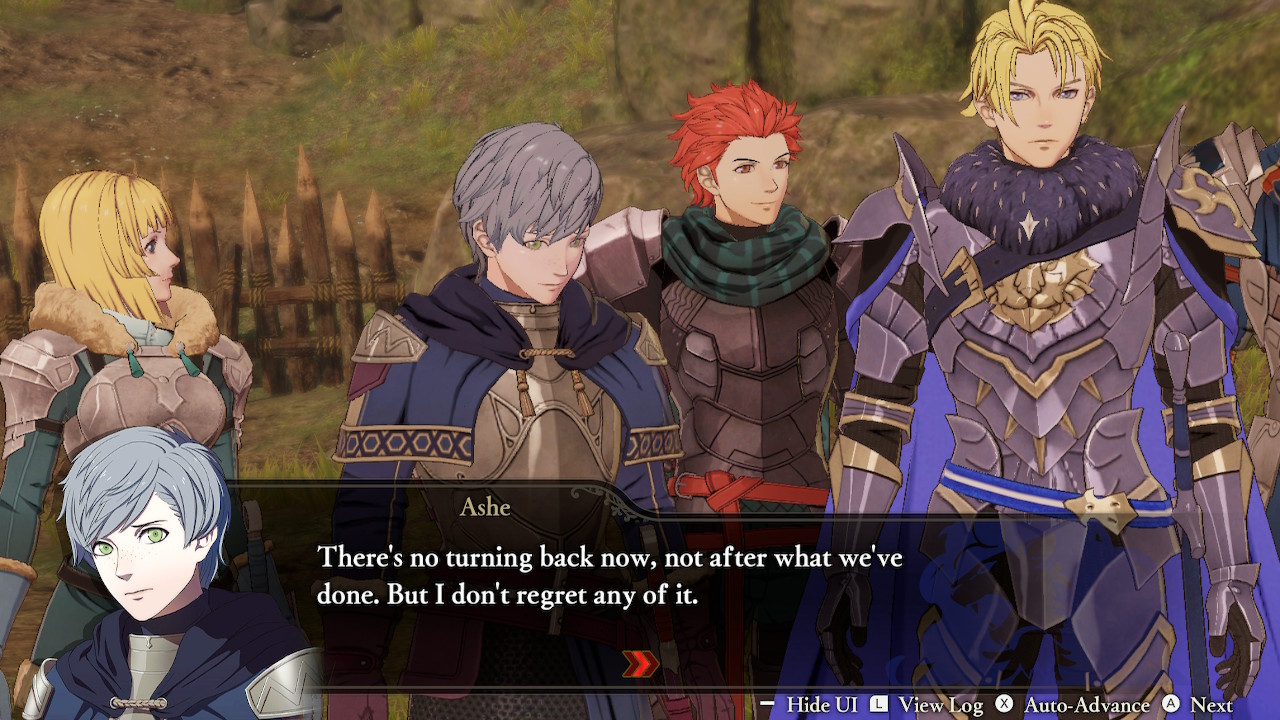
Fire Emblem Warriors: Three Hopes Takes a New Spin on the Narrative
It wasn’t clear before launch where Fire Emblem Warriors: Three Hopes landed on the timeline in the Three Houses universe. It is not exactly a sequel nor is it a golden route, as many speculated; rather, Three Hopes is an alternate take on events within a continent embroiled in heated conflict. It’s not meant to replace the story of its predecessor, but instead, supplement it by clarifying several plot points while also expanding and often even improving on the universe’s established lore and characters.
Make no mistake, Three Hopes is not an accessible game for those who are not familiar with Three Houses‘ lore. The story jumps off at an unrelenting and breakneck pace, and it assumes the player can fill in the gaps based on their knowledge from Three Houses. Edelgard’s plans and ambitions for the continent of Fodlan will probably come as a surprise to new players, and the finer points of pivotal events such as the Tragedy of Duscur and the Empire’s invasion of Brigid are vague, although much of it is elaborated on as the story continues. For those who have played Three Houses, you might actually feel a bit thankful some things are left unsaid. This is already a lengthy game with hours upon hours of dialogue to comb through, so it wastes no time for returning players to get right into the story and action.
As with Three Houses, Three Hopes is split into three routes. The stories of each route differ greatly — perhaps more so than in the previous game — so there’s a lot of content to explore. So far I’ve completed the Blue Lions route with Dimitri and around half of Edelgard’s Black Eagles route. Depending on which house you pick at the beginning of Three Hopes, you’ll see some repeated maps, but the narrative will always be fresh. This is excellent news indeed; in Three Houses, roughly half of the game was very similar, but only the first few hours in Three Hopes is what I would consider the same for all routes.
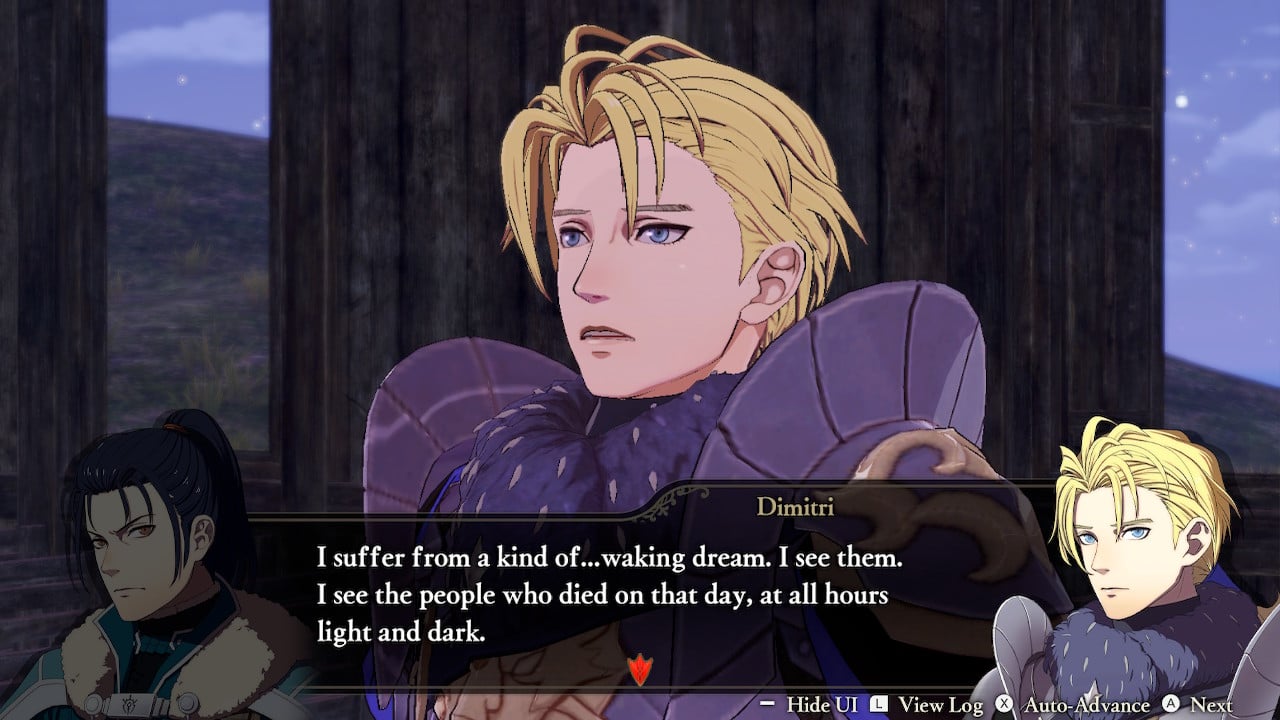
As I mentioned previously, Three Hopes is not going to be the “perfect ending” for the Three Houses universe. Although the story answers many questions, it also leaves plenty of others unanswered. Clearly, there will be some who are disappointed in unanswered questions, but where Three Hopes truly excels is in the portrayal of its characters. There are relatively few brand new characters in Three Hopes, but the warriors you grew to love in Three Houses all return. Each character has a remarkably distinct personality, and I’m quite pleased that there’s more content to experience and explore these characters all over again. In many ways, Three Hopes presents an opportunity to flesh out characters even more as they react to situations different from those in Three Hopes. We see different sides of these individuals with makes them feel all the more real and interesting.
Dimitri is still clearly a very troubled individual, plagued by the tragedy of his past, yet the way he copes with his mental health issues is presented in a different yet no less intriguing way. Felix is seen as a rather angry and cranky individual in Three Houses. In Three Hopes, Felix is still quite irritable but shows a bit more compassion and humanity in his actions. With dozens and dozens of support conversations between each unit, fans of these characters will find Three Hopes to be an absolute joy. Even now, I still want more. These are characters I’ve spent hundreds of hours with between both games, so you can’t help but feel close to them.
No matter the route you take, the player character Shez is the star of the show. Previous Fire Emblem games had pretty mediocre “avatar” characters, with Corrin from Fates being an absolute buffoon and Byleth being a blank, emotionless slate. Shez is a capable and smart protagonist that is respected by their peers. As a voiced player character, you’ll start to feel much more attached to Shez than any other avatar in the series. A nice added touch is dialogue choices sprinkled throughout various conversations. This gives the player a bit of agency that’s lacking in other titles in the series.
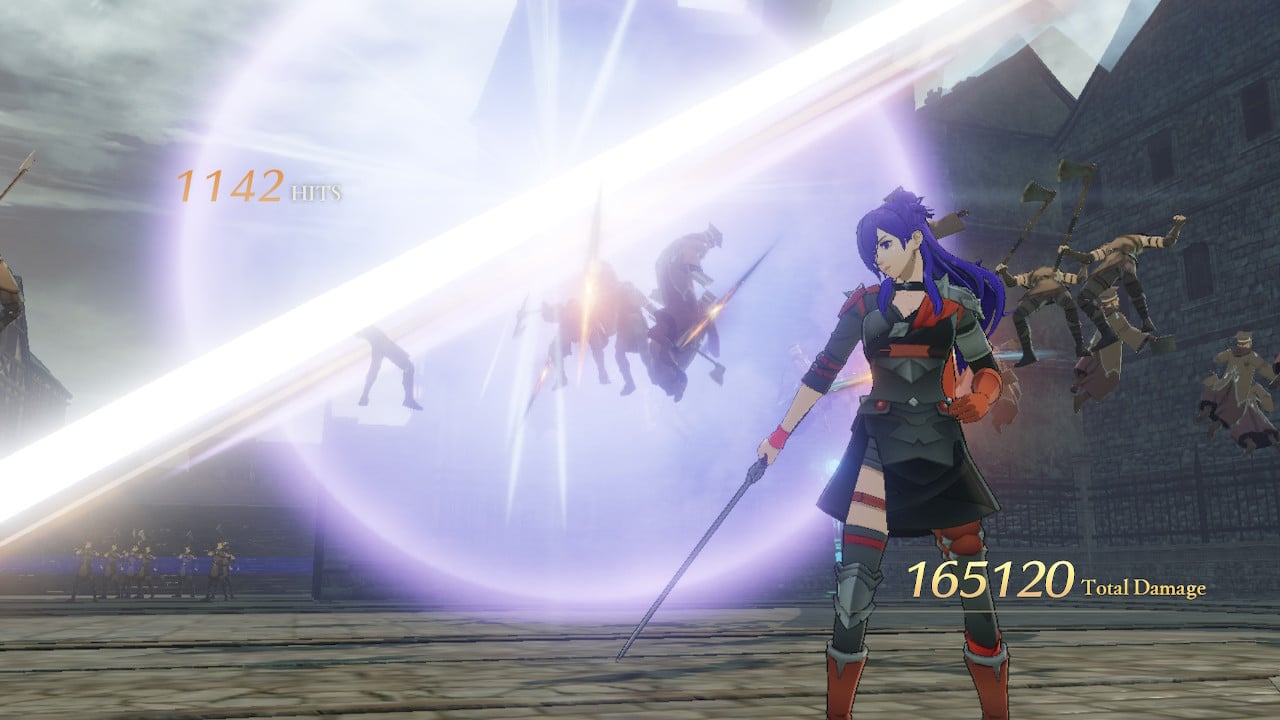
Fire Emblem Warriors: Three Hopes is a Definitely a Musou
All of the strengths and flaws of a musou game are front and center in Three Hopes. As many have come to expect, Three Hopes doesn’t run very well on the Nintendo Switch. The poor performance shouldn’t be a surprise after Hyrule Warriors, but it’s definitely a problem nonetheless. While it didn’t get in the way of my enjoyment, the game can chug whether there are just a few enemies on screen or hundreds. It utilizes the same graphic style as Three Houses which also ran quite poorly. It would have been nice to have some improvements to the graphics, but if anything it’s a downgrade from the 2019 title in order to accommodate the intense action.
Intense action is the typical formula for a musou game, and Three Hopes is no different. With access to a large cast of characters, you’ll hack and slash your way across a range of levels filled to the brim with hundreds and hundreds of enemies. Most enemies are complete fodder for your attacks. Dicing through so many foes at once is what makes a musou game as satisfying as it is, although it can feel repetitive. Thankfully, Three Hopes has enough to make me yearn for more and more combat, and that is because of the great implementation of Fire Emblem mechanics.
There are various mechanics Fire Emblem players will be very familiar with, including the weapon triangle, positioning, and leveling up. The weapon triangle is a big aspect of Three Hopes. Think of it like rock-paper-scissors for weapons: spears are effective against swords, swords are effective against axes, and so on. Since a map can hold a finite number of units, it’s up to you to figure out what the optimal loadout for a battle is. This isn’t any different from other Fire Emblem games, but it’s one absolutely necessary inclusion, even if this wasn’t a mechanic in Three Houses. From the map screen, you are also able to command units to attack, defend, and complete other objectives without the need to directly control them. So in many ways, it feels just as if you’re commanding your units turn-by-turn like other Fire Emblem titles.
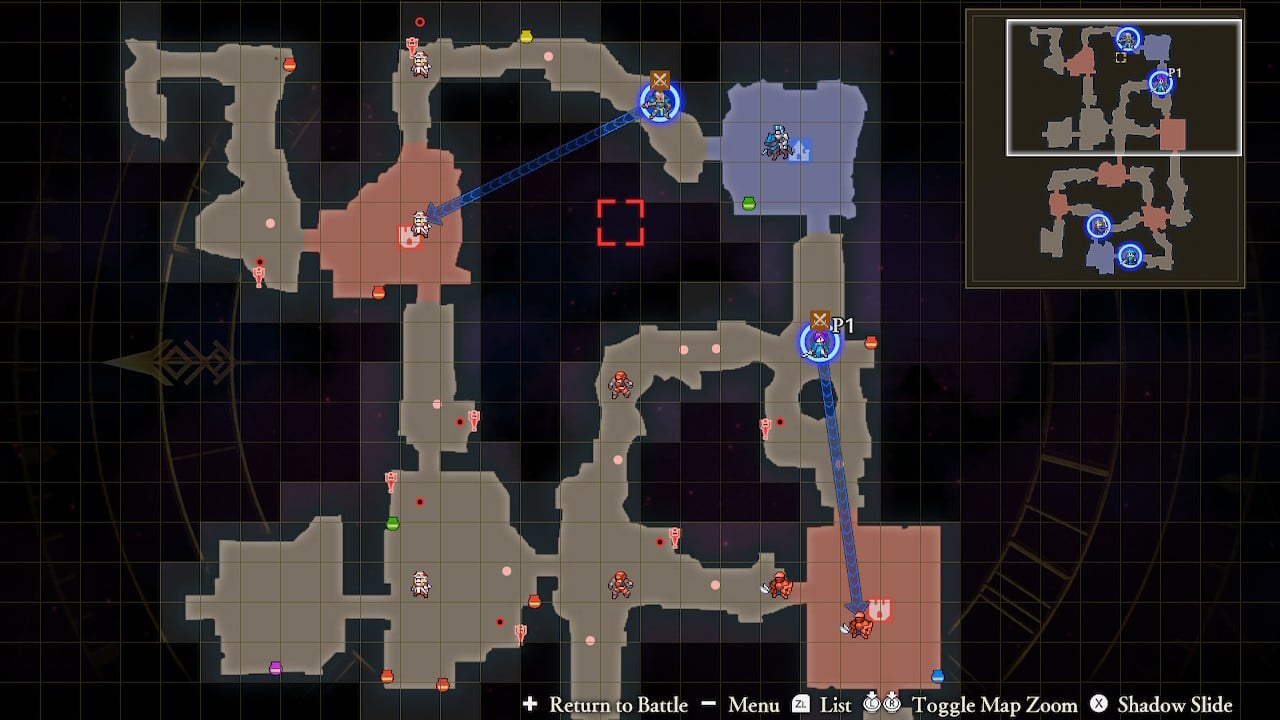
You never quite know what to expect with Three Hopes‘ battles. Every battle begins with a set goal, but various curveballs are thrown at you every chance it gets. Reinforcements may rush in and attempt to take captured bases or route important NPCs. It’s up to you to quickly and effectively react to these situations by command units as you would in a typical strategy title. It’s not a difficult game by any means, but the gameplay constantly keeps you on your toes. Throwing in numerous twists and turns during minor and major battles alike definitely keep Three Hopes from feeling too repetitive.
Leveling up characters, equipping them with weapons and various abilities, and fine-tuning your team to be as optimal as possible is as satisfying as any other Fire Emblem game. As you wage war across various battlefields, you’ll see your central hub, the war camp build up around you. With various upgradable facilities and merchants, the war camp is another vital component to Three Hopes‘ gameplay and adds a surprisingly deep layer of strategy would might find surprising for a musou. Combat is mostly similar to the previous Fire Emblem Warriors title, but the inclusion of the camp really helps set this title apart. If you’re like me, you’ll spend a generous amount of time in the war camp allocating resources to new projects and upgrading units. The war camp feels a bit like the Garreg Mach of Three Hopes, which is to say it’s the hub area where you’re able to explore and interact with various characters, while also improving them for the battles ahead. I always loved exploring Garreg Mach in Three Houses, and while the war camp doesn’t quite match the monastery’s splendor, it feels like a nice little home away from home.
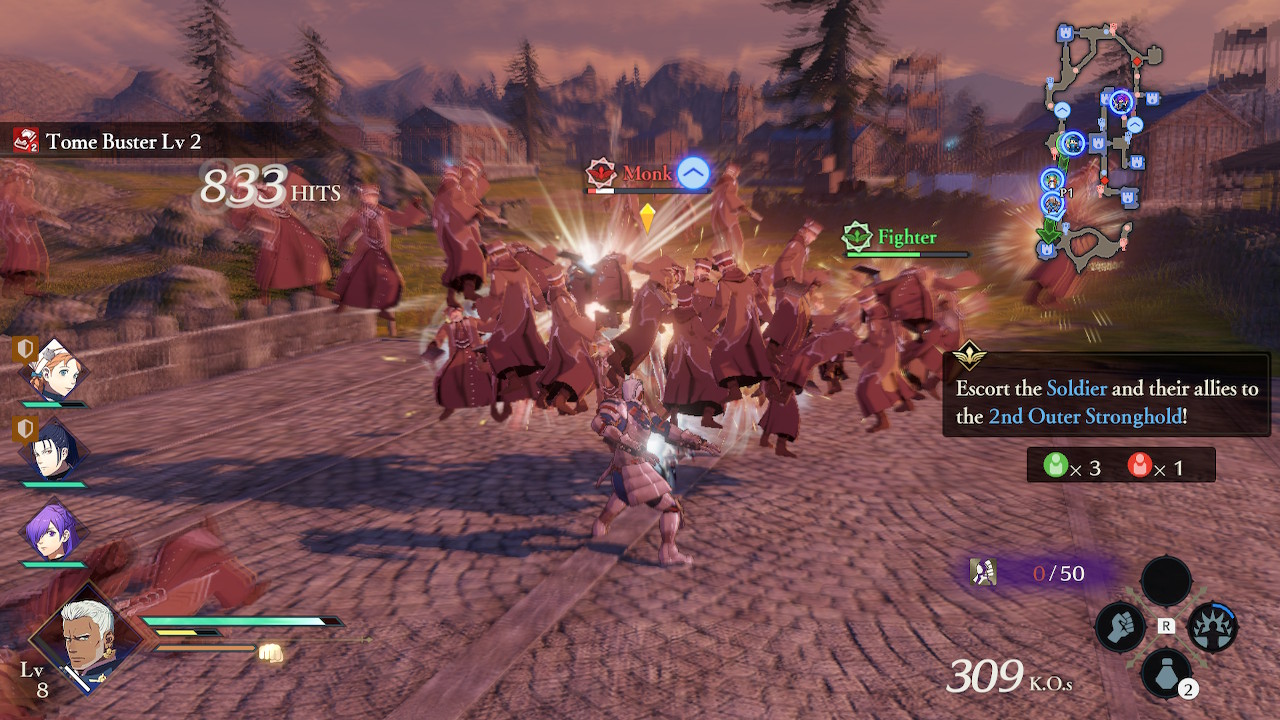
Fire Emblem Warriors: Three Hopes Review | Final Thoughts
At the end of the day, Fire Emblem Warriors: Three Hopes is another musou game, but it’s a damn good one. Players will stick around for the well-written characters, and there’s enough iteration on the typical hack-and-slash formula to entice Fire Emblem fans. Unlike the previous Fire Emblem Warriors title, you have a greater degree of customization over your units and approach to battle. Although the performance and graphics leave a lot to be desired, the music in Three Hopes is a fantastic, rock-and-roll spin on the typical Fire Emblem soundtrack. I know a lot of fans and newcomers to the series alike were conflicted about this one — it’s another musou after all — but I think Omega Force knew this, gave it their all, and ended up with a wonderfully fun, addicting, and engrossing action game worthy of fans’ praise.
TechRaptor reviewed Fire Emblem Warriors: Three Hopes on the Nintendo Switch with a copy purchased by the reviewer.




